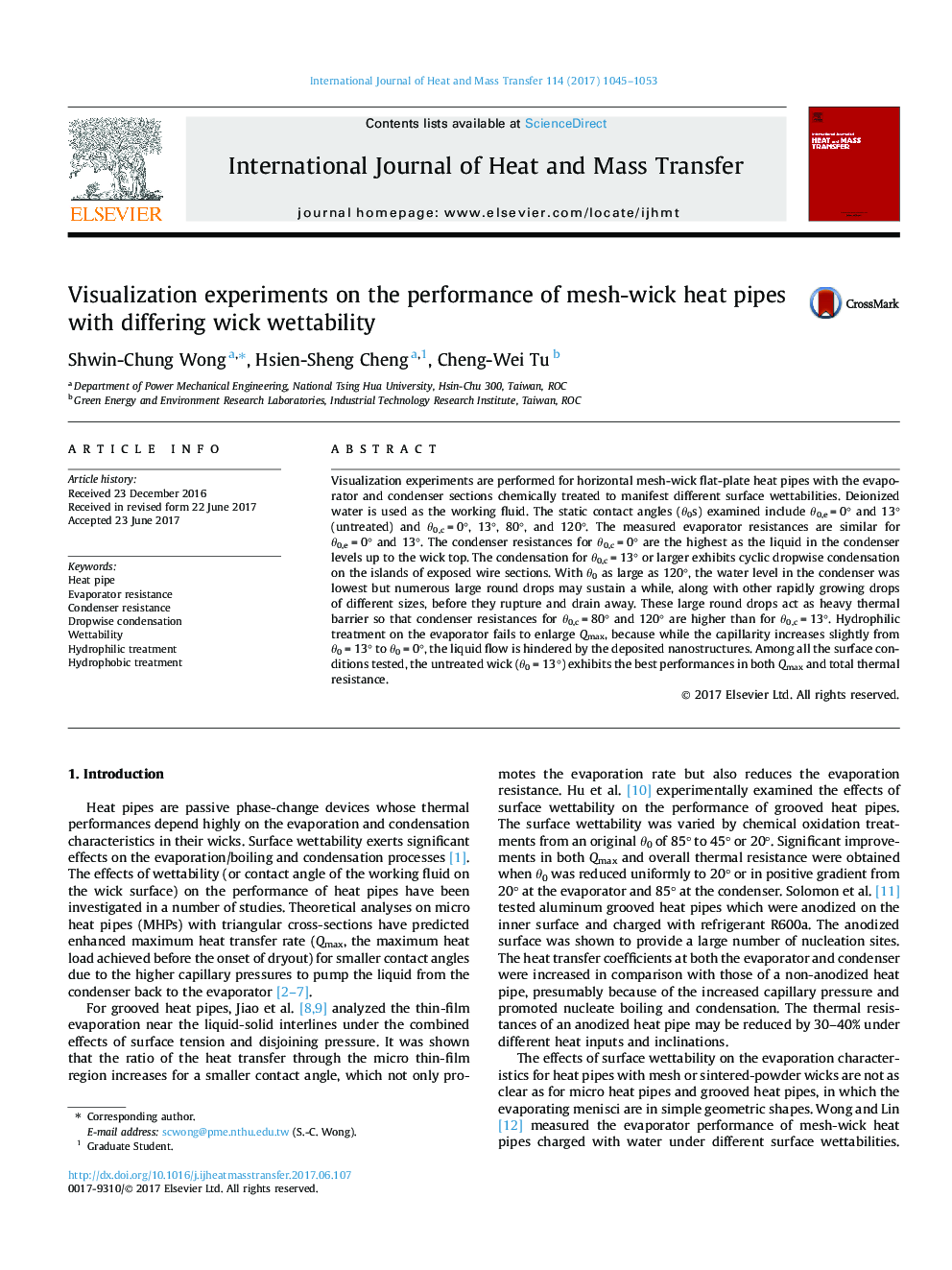| Article ID | Journal | Published Year | Pages | File Type |
|---|---|---|---|---|
| 4993930 | International Journal of Heat and Mass Transfer | 2017 | 9 Pages |
Abstract
Visualization experiments are performed for horizontal mesh-wick flat-plate heat pipes with the evaporator and condenser sections chemically treated to manifest different surface wettabilities. Deionized water is used as the working fluid. The static contact angles (θ0s) examined include θ0,e = 0° and 13° (untreated) and θ0,c = 0°, 13°, 80°, and 120°. The measured evaporator resistances are similar for θ0,e = 0° and 13°. The condenser resistances for θ0,c = 0° are the highest as the liquid in the condenser levels up to the wick top. The condensation for θ0,c = 13° or larger exhibits cyclic dropwise condensation on the islands of exposed wire sections. With θ0 as large as 120°, the water level in the condenser was lowest but numerous large round drops may sustain a while, along with other rapidly growing drops of different sizes, before they rupture and drain away. These large round drops act as heavy thermal barrier so that condenser resistances for θ0,c = 80° and 120° are higher than for θ0,c = 13°. Hydrophilic treatment on the evaporator fails to enlarge Qmax, because while the capillarity increases slightly from θ0 = 13° to θ0 = 0°, the liquid flow is hindered by the deposited nanostructures. Among all the surface conditions tested, the untreated wick (θ0 = 13°) exhibits the best performances in both Qmax and total thermal resistance.
Keywords
Related Topics
Physical Sciences and Engineering
Chemical Engineering
Fluid Flow and Transfer Processes
Authors
Shwin-Chung Wong, Hsien-Sheng Cheng, Cheng-Wei Tu,
